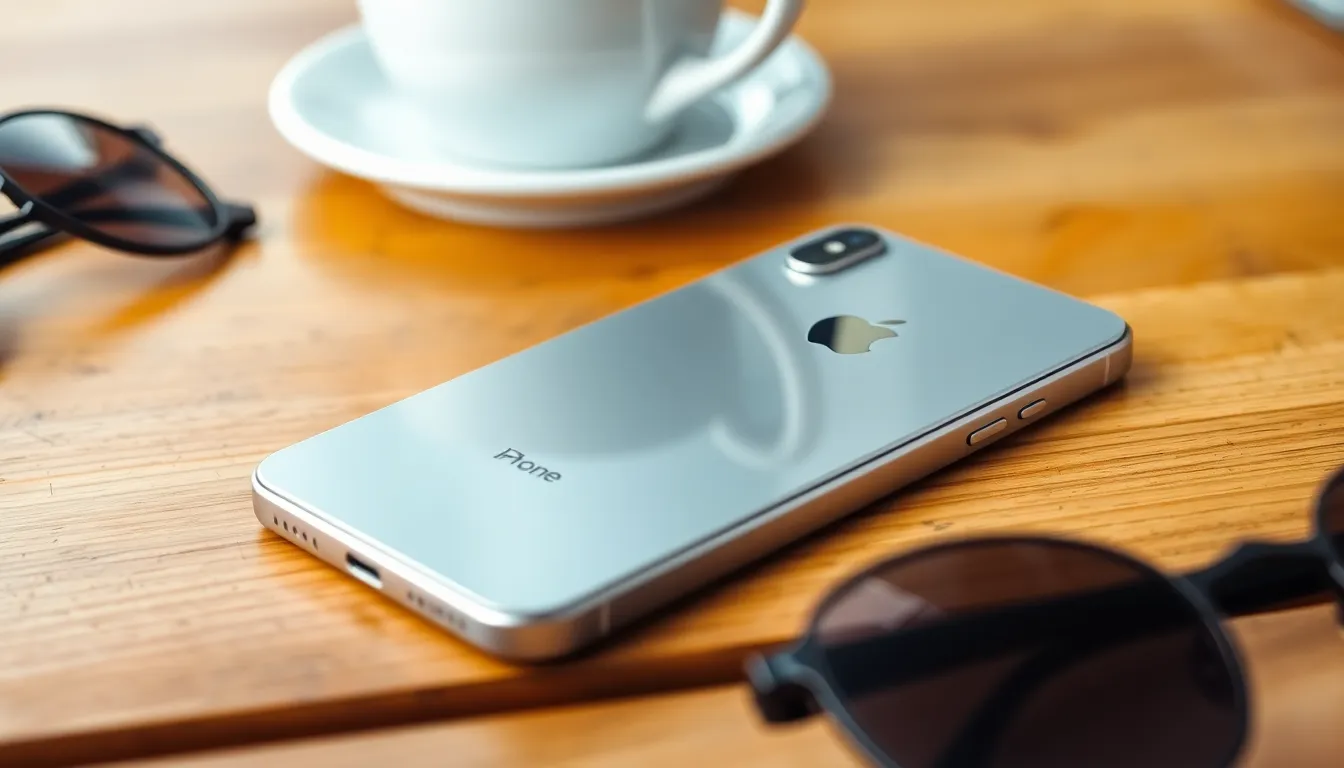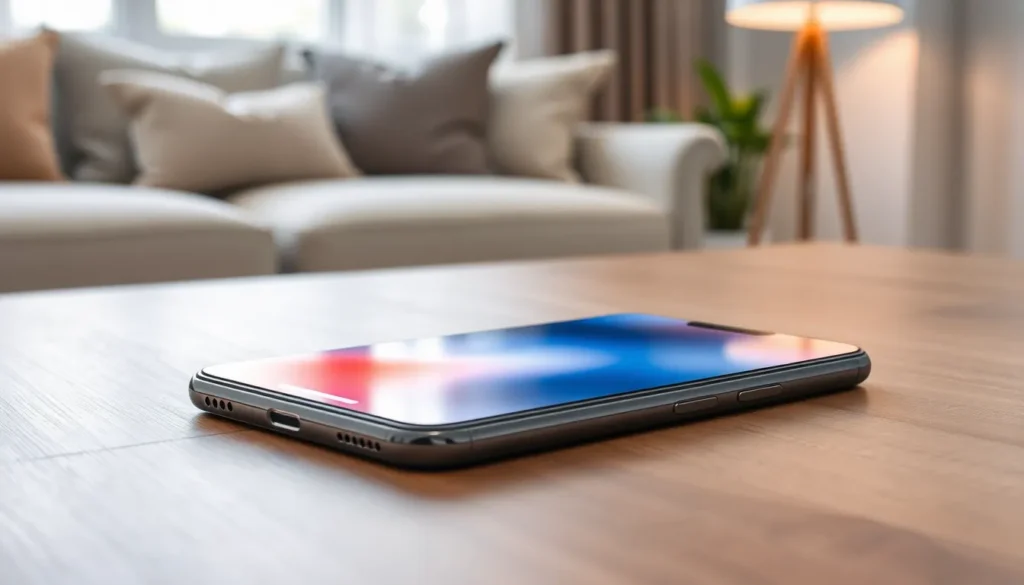Table of Contents
ToggleWhen it comes to iPhones, everyone wants to know the million-dollar question: how long will it last? With prices that could make a small car blush, it’s only natural to wonder if that shiny device will stand the test of time or if it’s destined for the dreaded drawer of forgotten gadgets.
Fear not, tech enthusiasts! Whether it’s your trusty iPhone 6 or the latest model, understanding its lifespan can save you from premature upgrades and that sinking feeling of buyer’s remorse. From software updates to battery health, several factors play a role in determining just how long your iPhone will stick around. So buckle up, because this isn’t just a tech talk—it’s a journey through the lifespan of your favorite pocket companion.
Understanding iPhone Longevity
iPhones generally last several years, with various factors influencing their lifespan. Understanding these elements helps users assess their devices better.
Factors Affecting iPhone Lifespan
Battery health plays a crucial role in determining how long an iPhone lasts. Users often notice diminished performance as the battery ages. Software updates also impact functionality; newer versions may require more resources, affecting older models. Hardware wear and tear contributes to issues like screen damage or sensor failure. Usage patterns, such as heavy gaming or frequent multitasking, can accelerate wear on components. Lastly, environmental factors like extreme temperatures and moisture exposure influence durability.
Importance of Regular Updates
Regular updates enhance security and improve performance. Apple frequently releases updates that optimize device functionality, fixing bugs and introducing new features. Keeping an iPhone updated helps maintain compatibility with apps, ensuring a seamless user experience. Security patches protect against vulnerabilities, safeguarding personal information. Delaying updates may lead to significant performance declines, especially for older models over time. Users benefit from staying current with updates to maximize their iPhone’s lifespan and usability.
Average Lifespan of an iPhone

An iPhone typically lasts between four to six years, depending on various factors. Battery health and hardware durability significantly influence overall lifespan.
Battery Life Expectations
Battery performance often deteriorates over time. An iPhone battery maintains optimal capacity for about 500 charge cycles, roughly translating to two years of daily charging. After this period, users may notice reduced battery life and performance. Regular software updates play a role in enhancing battery efficiency, reducing background activity, and prolonging effective usage. Keeping applications and the operating system updated helps maintain optimal battery health, allowing for longer lifespans before needing replacements.
Hardware Durability
Hardware durability directly affects how long an iPhone lasts. Models constructed with high-quality materials tend to withstand regular wear and tear better. For instance, iPhones with surgical-grade stainless steel or aerospace-grade aluminum cases exhibit increased resistance to scratches and shocks. Moreover, environmental factors like extreme temperatures and humidity can impact hardware longevity. Users who handle their devices with care, utilizing cases and screen protectors, enhance durability significantly. Apple’s commitment to quality ensures most current models endure extensive daily use without critical failures.
Signs Your iPhone Is Slowing Down
Recognizing signs of a slowing iPhone can help users take action before performance worsens. Keeping an eye on specific indicators aids in determining the device’s condition.
Performance Issues to Look For
Frequent app crashes or slow loading times signal underlying performance issues. Lag during tasks or delays when switching between apps can indicate stress on the device. A noticeable drop in frame rates while gaming reveals potential hardware strain. Users experiencing long boot-up times may face battery or software-related concerns. Also, increased heat levels during regular use can signify hardware malfunction or software inefficiencies.
When to Consider an Upgrade
Recognizing when to upgrade often comes down to performance and compatibility. If an iPhone model cannot run the latest iOS updates, it’s likely becoming outdated. A significant drop in battery health below 80 percent may prompt users to seek alternatives. Struggling to run essential applications should trigger a reassessment of the device’s utility. Additionally, if repair costs approach the price of a new model, upgrading makes practical sense.
Tips to Extend Your iPhone’s Life
Extending an iPhone’s life involves careful maintenance and smart usage choices. Following these tips can significantly enhance durability and performance over time.
Best Practices for Battery Maintenance
Regular charging cycles can help maintain battery health. Avoid letting the battery drop below 20 percent frequently. Keeping the battery between 20 and 80 percent optimizes lifespan. Using low power mode when battery levels are low reduces energy consumption effectively. Users should also refrain from exposing the iPhone to extreme temperatures, as heat can damage battery components. Always charge with certified cables and adapters to prevent overheating and failures. Additionally, consider scheduling battery maintenance checks annually for optimal performance.
Software Optimizations
Keeping the iOS up to date ensures users benefit from performance improvements and security patches. Regular updates optimize battery efficiency and minimize background processes. Disabling unnecessary notifications streamlines app usage and enhances productivity. Limiting location services for apps also conserves battery life and reduces wear. Users can customize settings to limit background app refresh, which decreases resource consumption. An organized photo library can improve loading times by regularly deleting unneeded images and apps. Overall, smart software management promotes longer device usability.
Understanding how long an iPhone can last empowers users to make informed choices. With proper care and maintenance, an iPhone can serve reliably for four to six years. Factors like battery health and software updates play crucial roles in extending its lifespan. Recognizing signs of performance decline helps users decide when it might be time to upgrade. By adopting best practices for battery and software management, users can maximize their device’s durability. Ultimately, a well-maintained iPhone not only performs better but also provides a more satisfying user experience over the years.




